28 Sep 2006 Eggenfellner Subaru Ultra Mini Alternator #2026
Update: 20210918 I ended up removing the Eggenfellner Subaru engine and replacing it with a Lycoming. Any post that references the Eggenfellner or the Subaru should be there only as an example of what not to do. Listen to the designer, and install the engine that that designer recommends – which for the RV-8 is a Lycoming IO-360.
The Eggenfellner Subaru conversion that I have bought comes with an alternator from http://www.ecae.com/alt1.html – the “Ultra Mini Alternator #2026” They claim 55 amps of output. My load analysis shows a max of 41 amps of current required, excluding recharging the batteries after startup.
Some open questions I have about this alternator are:
Does the IGN lead also do bus voltage sensing?
Should the light come on when there is no power to the IGN lead? I’ve read that you can just tie the light lead to the IGN lead, with a lamp or 100 ohm resistor. I think the resistor is a better idea since it is far less likely to fail than a lamp.
What minimum speed does the alternator need to turn to cause the lamp to go off? I used a 6000 RPM electric drill, and while I could get the alternator to output as much as 6 amps, quickly dropping to about 1.5 amps, the light never went out.
I went to a junkyard (Anker Bernard, La Rincieure 2, 2065 Savagnier, Tel: 032 854 20 00) and picked up this connector off of a Suzuki “Jeep”. It was free, and contained a nice little rubber cover. Now I can hook up the alternator warning light. You can see the connector that came with the alternator there too. It’s got the green cable.
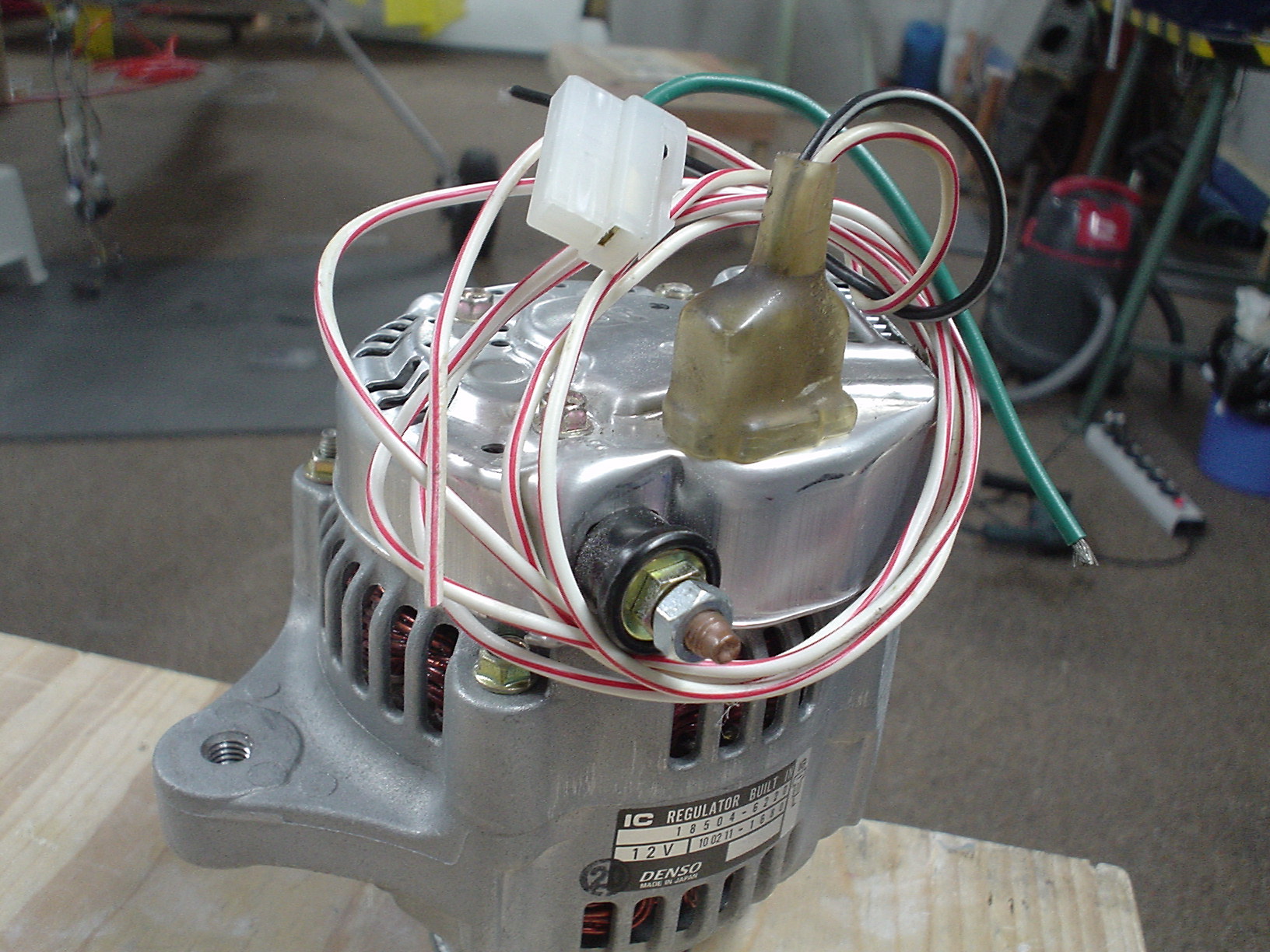
I bought these 12v LED lights at radio shack a while back, and I thought they would make good warning lights for the alternator. The problem is that I can’t measure the resistance of the LED. I have read that there is something strange about measuring LEDs, since they act like diodes, but I’d still like to know if this will work as a warning lamp for the alternator.
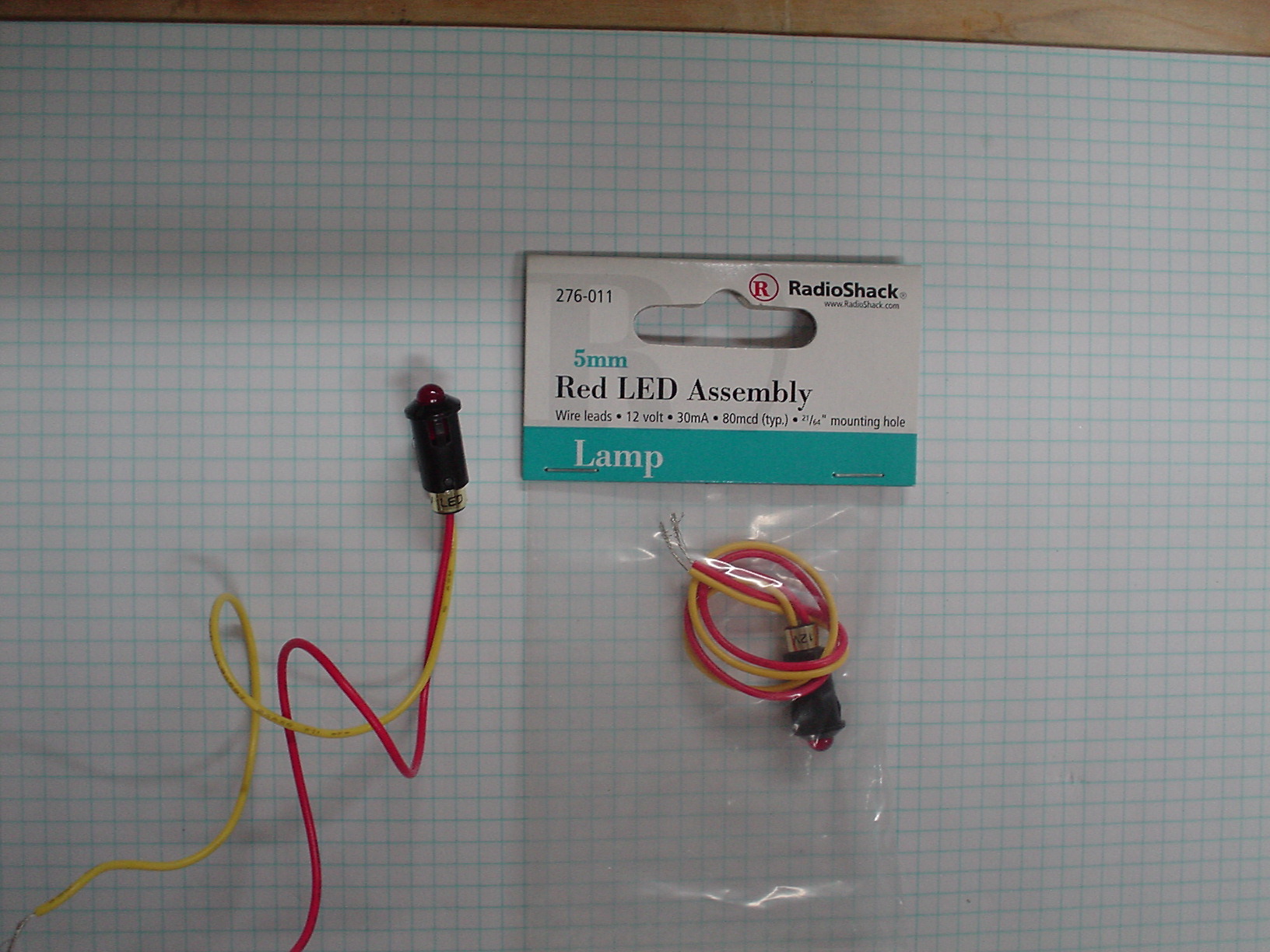
Update:
Try the Tech Dept of Worldwide Auto, 300 W. Brooker, Winchester, VA 22603, 540-667-9100.
I spoke to Jim in the tech department, and he told me that I should use the L terminal to turn on and off the alternator. Good info! I’ve also sent a e-mail to Denso to see if they have any data sheets or spec sheets or any technical information about this alternator. (Denso 100211-1680)
Jim also said that the alternator wants to see a slightly lower voltage on the L terminal than that of the IG terminal. He also said that a LED is fine as a warning lamp.
More testing – I have found out that the L terminal *does not* turn on and off the alternator. Only the IG terminal does that. Here is a simple table showing the results of my testing.
| Alternator rotating | L terminal | IG terminal | B terminal | Warning Lamp on? |
| Y | +12V | +12V | +14.5V | N |
| Y | 0V | +12V | +14.5V | N |
| Y | +12V | 0V | 0V | N |
| Y | 0V | 0V | 0V | N |
| N | +12V | +12V | 0V | Y |
| N | 0V | +12V | 0V | N |
| N | +12V | 0V | 0V | N |
| N | 0V | 0V | 0V | N |
Here is what I have learned:
- just applying 12v to the IG terminal is enough to activate the alternator. Removing 12v from IG causes the alternator to stop generating electrons.
- The L terminal is *not* used as a sense lead, since removing the power to the L terminal does not change the output of the alternator.
- At first glance, it appears the L terminal and warning lamp is not needed, *but*, it is possible that the warning lamp will come on under conditions outside the obvious undervoltage or overvoltage conditions. For example, will the lamp come on if the alternator is getting to hot, as a warning? How about if a rectifier fails? Any other possible failure modes?
Here is a picture of my test setup:




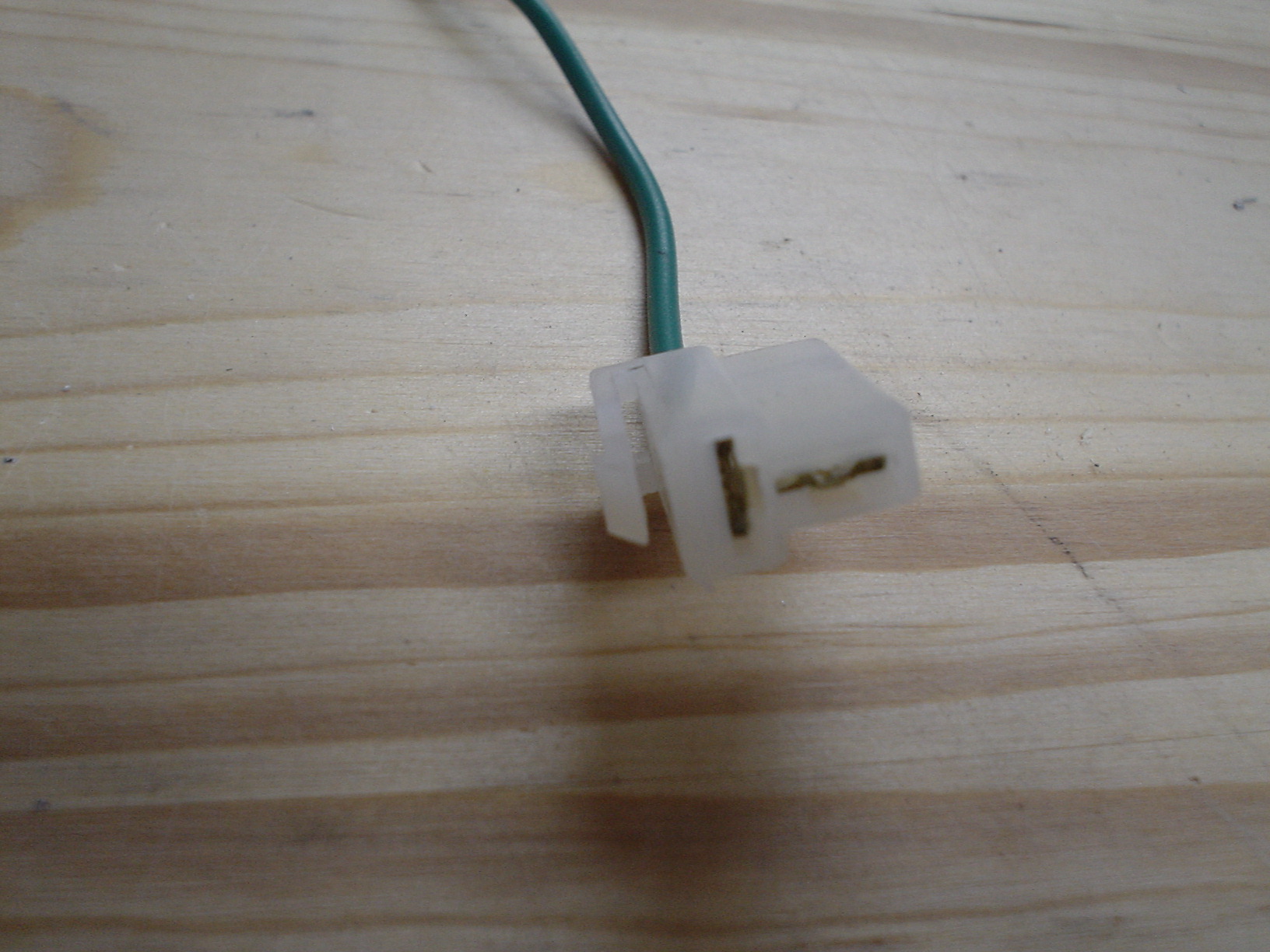
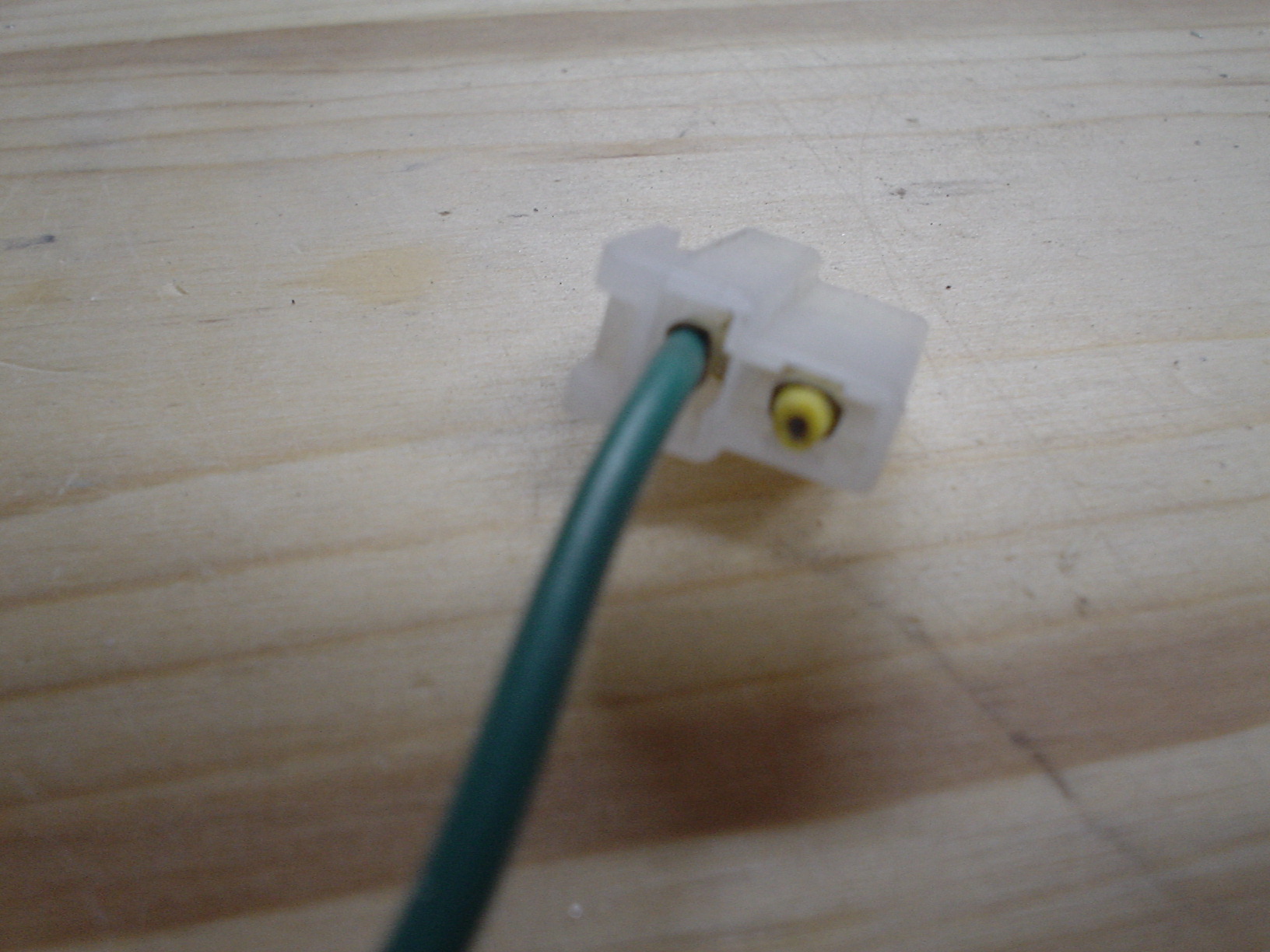
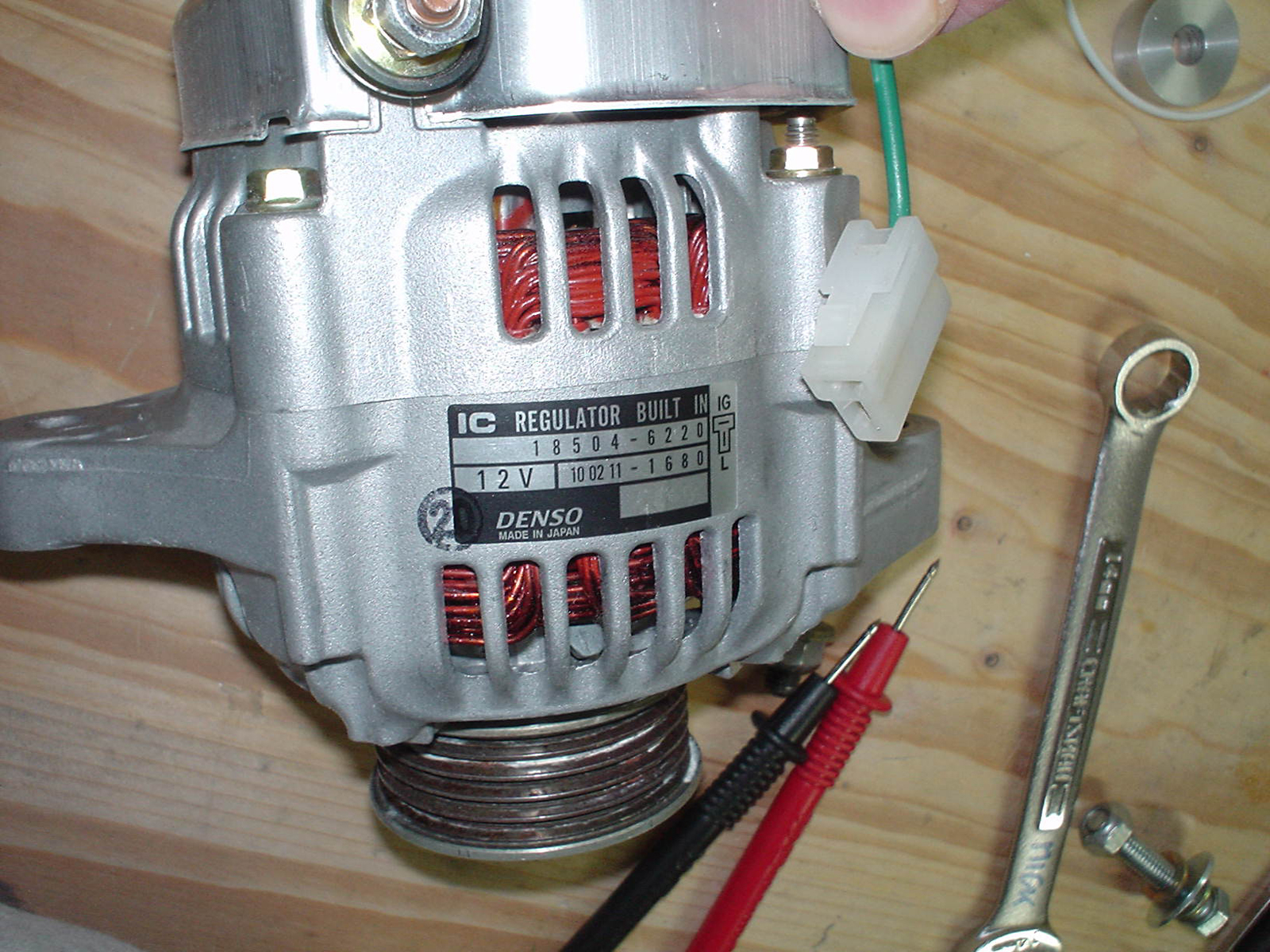
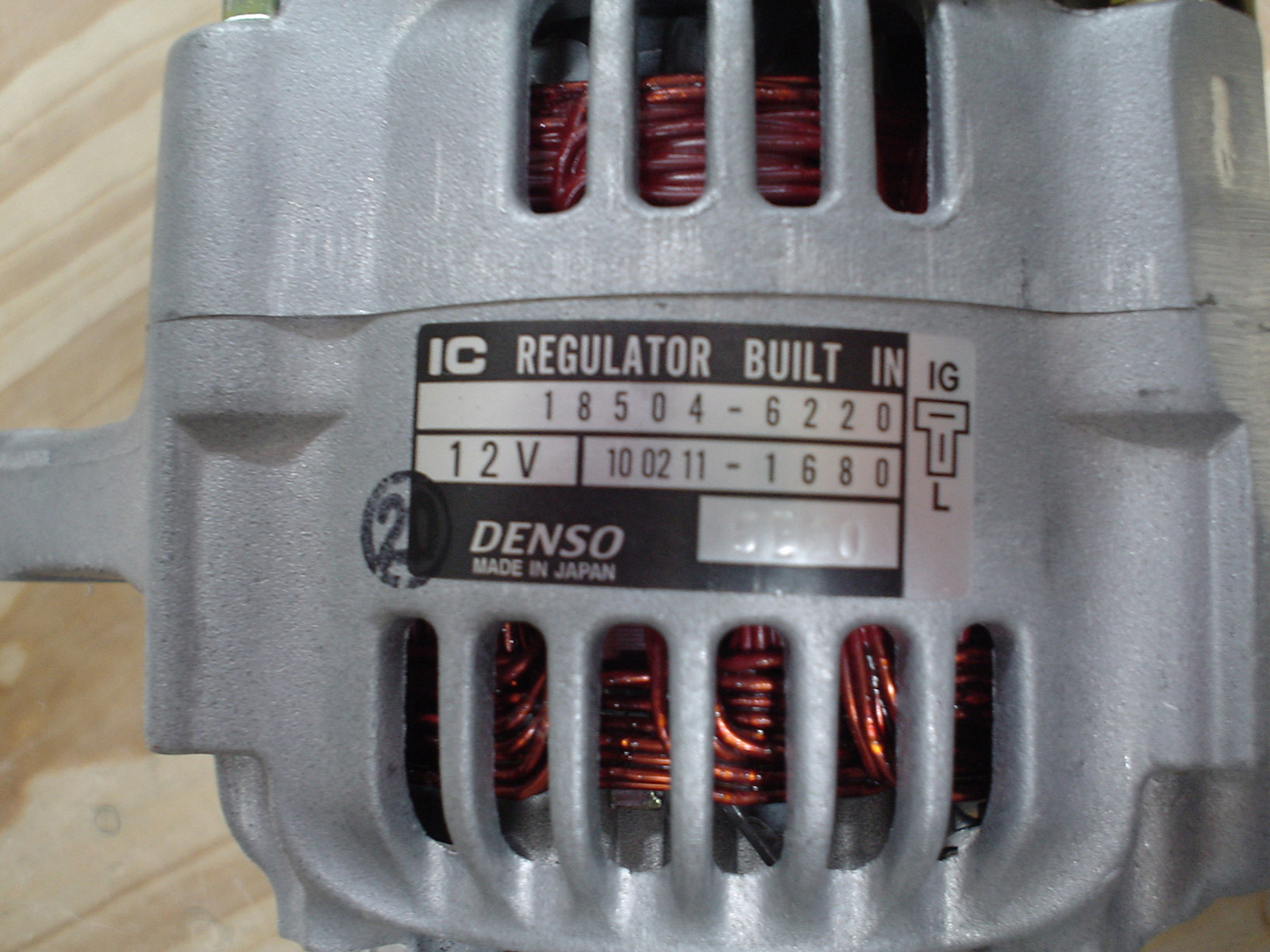
Sorry, the comment form is closed at this time.